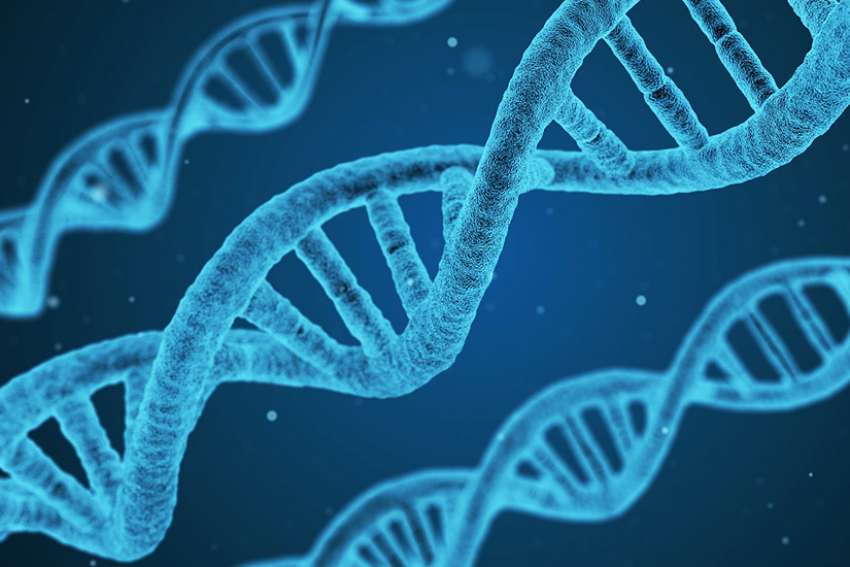Viewers of the April 29 segment on 60 Minutes witnessed a demonstration of Mitalipov’s groundbreaking research, published last year, that now makes it possible to add, delete or enhance human genetic content — and pass those changes onto the next generation.
Gene editing has been around for decades. But with this latest technology — called CRISPR-Cas9 — the capacity now exists to permanently alter the genes of our descendants. Among many ramifications, this raises the spectre of so-called designer babies.
Dignitas Personae, a 2008 Vatican document on bioethics, explores the danger of a “eugenic mentality” in which genetic engineering would be a way of “improving and strengthening the gene pool,” which would also stigmatize people who lack certain qualities society deems desirable.
Gene editing is currently used in gene therapy, an experimental technique in which genes are used to treat or prevent diseases. This is done by replacing a disease-causing mutated gene with a healthy copy of that gene, inactivating a mutated gene, or introducing a new gene to fight the disease.
This has always been done within a person’s body. But Mitalipov went one step further. He took a sperm sample from a man who had a particular type of heart disease that could be passed onto his offspring. He then removed that part of the gene carrying the heart disease and replaced it with a healthy copy of the gene; 72 per cent of the 112 human embryos he created were free of the genetic mutation for that heart disease.
In Canada, it is illegal to knowingly “alter the genome of a cell of a human being or in vitro embryo such that the alteration is capable of being transmitted to descendants.” But there are growing calls to de-criminalize gene editing for the purposes of non-clinical research. The Canadian Institutes of Health Research has published a “Points to Consider” document to inform debate on the issue.
The idea is to prevent inheritable diseases — such as sickle cell anemia, muscular dystrophy, etc. — from being passed on. But there are fears that this could progress from preventing diseases to adding desirable traits.
The concept of designer babies is morally repugnant to most people. Proponents assure us that the technology would only be used for the compassionate goal of preventing human suffering.
Once upon a time, abortion was also considered morally repugnant. Doctor-assisted suicide was unthinkable. Both were illegal.
But “compassion” arguments opened the door. In 1969, abortion was only allowed if a mother’s health or life were endangered and had to be approved by a committee of doctors. In 2016, doctor-assisted suicide was permitted for those with “a serious and incurable illness, disease or disability” whose “natural death has become reasonably foreseeable.”
Abortion and doctor-assisted suicide have gone from being illegal to being trumpeted as human rights. The precedent has been set. If the justification is that we own our own bodies, and hence are the final authority on when a fetus lives or when we ourselves die, then what’s to stop us from moving beyond disease prevention in gene editing?
If we own our bodies, can’t we enhance our DNA to create the children we want? If it’s our right to terminate life, shouldn’t it be our right to create life, on our terms?
Dignitas Personae spells out the dark implications of this thinking: “It must also be noted that in the attempt to create a new type of human being one can recognize an ideological element in which man tries to take the place of his Creator.”
This is the pivotal moment to slam the door on germ line editing. As a 2015 editorial in the journal Nature argues: “At this early stage, scientists should agree not to modify the DNA of human reproductive cells.”
(Majtenyi is a public relations officer who specializes in research communications at an Ontario university.)
Cathy Majtenyi: Gene editing is heading down a slippery slope
By Cathy MajtenyiThe pipette appears on the screen and sucks up a dot, which is actually human sperm that has been genetically altered. Then the small laboratory tool pierces the membrane of a human egg, releases the sperm, “and you have changed the genetic destiny of that embryo,” notes television host Bill Whitaker. “Yes, we believe so,” nods scientist Shoukhrat Mitalipov.
Please support The Catholic Register
Unlike many media companies, The Catholic Register has never charged readers for access to the news and information on our website. We want to keep our award-winning journalism as widely available as possible. But we need your help.
For more than 125 years, The Register has been a trusted source of faith-based journalism. By making even a small donation you help ensure our future as an important voice in the Catholic Church. If you support the mission of Catholic journalism, please donate today. Thank you.
DONATE

